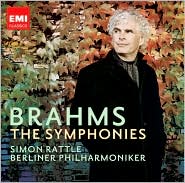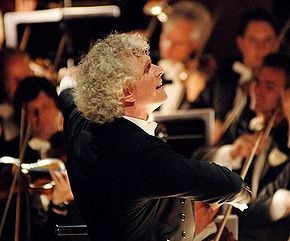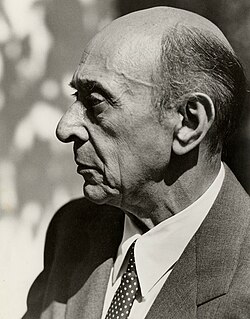Saturday, Dec 12th ’09
I buy my concert tickets ahead of time and earlier today morning, I thought that I would be losing precious time at a concert when I should be really working on the zillion other things on the to-do list. But then I had a “”brain freeze” (when you can’t think anymore and the brain is just dead -something like sleeping with your eyes wide open) and I could no longer stare at the code I had been working on the whole day! So the concert proved to be a blessing and a nice break .
I am comparatively recent to the world of Western Classical music and as I go to various performances, I get to learn more about the composers and their music. So today, it was an introduction to French Composer Ravel and his music.It also included a taste of the work of Brahms from his younger years.

Ahhhh… the French! They are so different from the rest. Their language, cuisine, culture, style and of course, music- it ees something deefferent (trying to speak french in eengleez and that seems to be an attempt in vain). They stand a class apart as does M. Thibaudet’s superb playing.
The evening’s performance made it clear that Mr.Thibaudet loves Ravel. Contrary to what I had posted in the preview, his love for Ravel was majorly influenced by his teacher, Lucette Descaves, a friend and collaborator of Ravel. As for M. Ravel himself, he is like a painter who evokes these images with a certain sensitivity of a poet. There is such a complex arrangement in his music and it is so full of color. Let me try to explain this more. Some directors show violence blatantly (for example, you can actually see a guillotine chopping off a person’s head and the head with the eyes wide open with terror falls down with a thud in the wicker basket). Other directors just hint that something gruesome had happened (they show the blood spatter on the guillotine and a wicker basket covered with a blood-soaked rag) and leave it to the audience to picture the violence. And the second approach proves so much more effective (and often gets the Oscars!). Similarly, Ravel falls in the second category. His music just leaves so much to the listener to interpret and the result is brilliant.

The first piece “Pavane pour une infante défunte (Pavane for a Dead Princess) was very different in the sense that I would start forming a certain opinion about the mood of the piece and then suddenly, there would come an unexpected string of notes that would make me change my mind about it. The music felt as if the composer was trying to portray one’s wavering mind. I loved the ending of this piece as it just felt conclusive as if someone had finally made a decision. This is one of the pieces that just grows on you.
The second piece, Ravel’s “Miroirs”, a suite of musical portraits was something I was looking forward to. It just turned out to be fabulous. Each movement was so beautifully executed. I loved the third movement, “Une barque sur l’océan (a boat on the ocean) the most. Here’s my interpretation. There was a slow melody (like the red wave in the picture below representing the movement of the boat as it goes over the large waves) and then a complicated faster melody(like the green wave representing the rocking of the boat).As for the picture, maybe my mathematical mind wasn’t completely switched off yet. But, somehow, it seemed as if the composer was looking at this boat and was trying to portray the emotions of the oarsman as well. This movement was definitely the highlight of the evening for me.

I feel that the skill of a pianist lies in how well he can create a distinction between the various sounds that can be made on a piano- for example, like pianissimo and fortissimo. M. Thibaudet is definitely one of those truly gifted pianists who can do this really really well (you should have heard him play the fifth movement, “Valley of the bells”). At the end of the pieces that called for a soft ending, M.Thibaudet would press the sustain pedal and you could hear the dying sounds so well. The clarity was amazing (I was seated in the third row, yeah!) and as for the staccatos and the legatos, they were so perfect that I wanted to just run to the stage and hug M. Thibaudet. Ravel’s work is very complicated and it is not for the faint. M. Thibaudet pulled it off with perfect grace.
The next program was Brahms’ sonata No.3 which Brahms had composed when he was still in his late teens (Wow,what a genius! It makes me feel so small and insignificant). This piece showed the difference between German and French music clearly. Brahms’ sonata was so full of a sort of authoritativeness and had a clear underlying structure and there was heaviness mixed with doses of high energy! Ravel’s music, on the other hand, had this fluidity to it and a certain grace that only the French know how to do ( You see this in Monet’s paintings and can hear it in Ravel’s music). The musical difference is as distinct as differences between the German and French languages themselves.
Somehow, in spite of Brahms’ excellent “teen” work and M. Thibaudet’s flawless playing, I wasn’t particularly attentive to this piece. Could be that I was so used to Brahms (I listen to his symphonies and concertos on a regular basis) and you know, “familiarity breeds contempt” or in mycase, “inattentiveness”. Isn’t that so strange that when we are tired, something novel immediately gets our attention and yet we always crave for the familiar during other times? Ok, that didn’t make sense to me either. Still in my “brain freeze” stage, people!
Anyway,the encores (one other piece from Brahms (which was more uplifting ) and Chopin’s Nocturne(Oh, I love this one)) left me so content and satiated.
At concerts like these, I just wish I knew more to comment intelligently as the great music critics do and I feel so small and stupid when I realise how little I know about Music theory and the technicalities of Western music.
As I walked back from the Hill against a gale of wind that threatened to blow me away, there was a car that went past that “honked” Jingle Bells (it was very good) and I just had to smile! And I had this epiphany that the real purpose of music is just to please the heart and sometimes it is okay to listen with the heart and not be a “cerebral” listener. At the end of the day, the arpeggios or the cadenzas or the 101 techniques the artist had employed don’t matter. What matters is the euphoric feeling with which you leave the concert.
From the heart ,
Krithika, [art]seen reviewer







